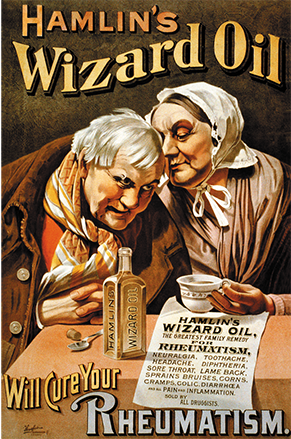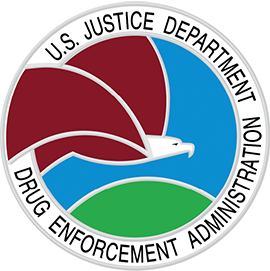2.1 Pharmacy Oversight
During the 19th century, the manufacture of drugs in the United States was unregulated. Medicines did not have to be proven safe or effective to be marketed. Opium and many of its extracts—such as morphine, codeine, and even heroin—found their way into medicines and were widely touted as cure-alls. These medicines were hawked by boisterous charlatans who would take their traveling medicine shows from town to town to proclaim the latest “miracle cure.” There were no labeling regulations and no research to support the claims. In addition to opium extracts, these potions generally contained a high content of alcohol to make the customer “feel better.” Not only were these medications addictive, but they occasionally caused injury or death.
 Pharm Fact
Pharm Fact
The most popular antibiotic dispensed in Mexico without a prescription is penicillin.
By the advent of the 20th century, there were major concerns about these rogue medicines and about the purity of drugs imported from other countries. As a result, laws, oversight agencies, and professional organizations evolved to protect the public.
Laws and regulations related to drug approvals and pharmacy practice are generally stricter in the United States than in other countries. For example, in Mexico, you may be able to get many drugs without a prescription that would require a prescription in the United States, including some antibiotics. Such lax drug control seems astonishing to American pharmacy professionals in light of the distinct possibility of inappropriate use, poor quality, adverse reactions, and problematic drug interactions. Issues related to stringent US drug laws continue to be debated publicly because of the ongoing illegal importation of drugs from Canada and Mexico.
Governmental agencies and professional organizations that exercise controls on the contemporary practice of pharmacy include the following:
federal, state, and local legislative bodies, such as the US Congress, state legislatures, and municipal governing councils, and the federal and state courts that uphold their laws
federal and state regulatory agencies, including the following:
Food and Drug Administration (FDA)
Drug Enforcement Administration (DEA)
Occupational Safety and Health Administration (OSHA)
Federal Trade Commission (FTC), which has authority over business practices, such as direct-to-consumer drug advertising
Health Care Financing Administration (HCFA) of the Department of Health and Human Services (HHS) and the Center for Medicare & Medicaid Services (CMS). The CMS has authority over reimbursement under the Medicare and Medicaid government drug insurance programs
State boards of health and welfare agencies that budget for the provision of drugs needed by low-income or disabled individuals
Centers for Disease Control and Prevention (CDC)

In the late 1880s, there was no control over the sale of pharmaceutical products. Thus, consumers were unprotected.
US Pharmacopeial Convention (USP)
professional organizations including the following:
Joint Commission (a professional hospital and healthcare system organization)
National Association of Boards of Pharmacy (NABP)
Individual state boards of pharmacy
American Pharmacists Association (APhA)
American Society of Health-System Pharmacists (ASHP)
International Pharmaceutical Federation, National Pharmacy Technician Association, and American Association of Pharmacy Technicians
individual businesses, companies, corporations, and institutions, such as community pharmacies, hospitals, nursing home facilities, and home healthcare organizations

This seal represents the Drug Enforcement Administration, the federal regulatory agency that enforces the Controlled Substances Act.